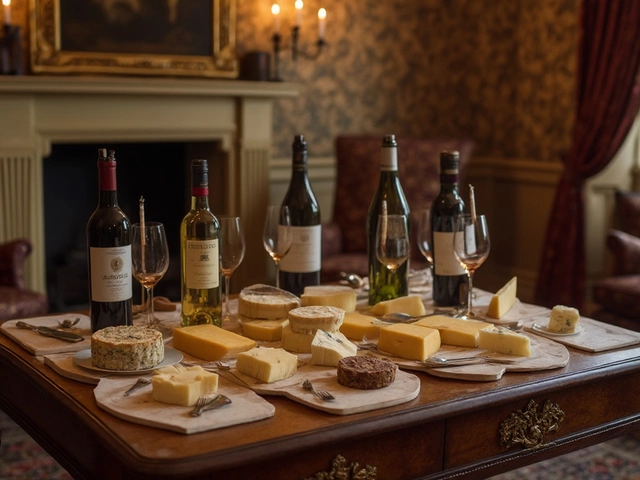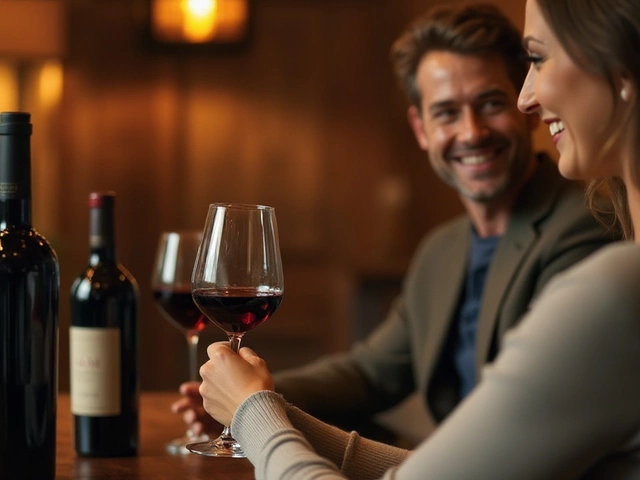How to Prepare for a Whisky Tasting Like a Pro
Planning a whisky tasting doesn’t have to be intimidating. With a few smart moves you can set the stage for a smooth, enjoyable experience. Below you’ll find the practical steps that make a difference, from the glass you use to the way you take notes.
Choose the Right Glass and Set the Scene
The first thing most people overlook is the glass. A Glencairn or a tulip glass is ideal because its shape concentrates the aromas and lets the liquid sit comfortably in your hand. If you only have a regular tumbler, that’s fine—just make sure it’s clean and free of lingering smells.
Lighting matters too. Soft, natural light lets you see the colour of the whisky without distorting the hue. Avoid harsh fluorescent bulbs; they can mask subtle visual cues. A quiet room with minimal distractions lets everyone focus on the nose and palate.
Temperature, Water, and Palate Cleansing
Whisky tastes best at about 15‑18°C (60‑65°F). If the dram is too warm, the alcohol will dominate; too cold and the flavors hide. Let the bottle sit for a few minutes after removing it from the fridge, or use an ice bucket with a small amount of water to gently bring it down.
Adding a splash of water is a classic trick. A few drops open up the spirit, releasing hidden notes. Start with a teaspoon of room‑temperature water, swirl, and then sip. Everyone’s palate is different, so let each person decide how much water they need.
Before you start, cleanse your palate. A plain cracker, a bite of plain cheese, or a slice of apple works well. Avoid strong flavours like coffee or spicy foods, as they linger and skew the tasting.
Take a Structured Approach: Look, Nose, Sip
When the dram is poured, hold the glass up to the light and note the colour. Darker shades often hint at sherry cask influence, while lighter hues may suggest bourbon or grain cask aging. This visual cue gives a quick clue about the whisky’s background.
Next, bring the glass to your nose. Take a gentle inhale—don’t crush the glass against your face. Identify the first aromas: fruit, smoke, spice, or nutty tones. If you’re new, use a simple reference list (e.g., apple, vanilla, peat) to label what you smell.
Finally, take a small sip and let it coat your tongue. Notice the initial impression, the mid‑palate development, and the finish. Write down three words that capture each stage. This habit builds a personal library of flavour memories.
Keep It Fun and Friendly
Remember, a tasting is social, not a competition. Encourage everyone to share their thoughts, even if they differ. A light‑hearted banter about “the smoky one” or “the one that tastes like honey” keeps the vibe relaxed.
If you have a group, consider a blind tasting. Cover the bottles and let participants guess the region or age. This adds a playful challenge and sharpens sensory skills.
When the session ends, thank your guests and offer a small snack—nuts, dark chocolate, or dried fruit work well with whisky. A final sip with the food can reveal how flavours interact, rounding off the experience nicely.
With the right glass, proper temperature, a quick palate cleanse, and a simple look‑nose‑sip routine, you’re set for a whisky tasting that feels polished without being pretentious. Grab a few drams, invite friends, and enjoy the journey through the world of whisky.
Want to get the most out of your whisky tasting? Here's what to eat beforehand to keep your palate sharp and your senses firing, plus tips and honest insights.
View Details

